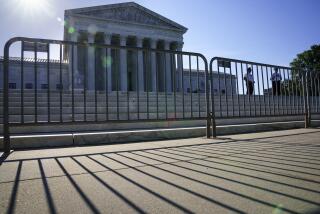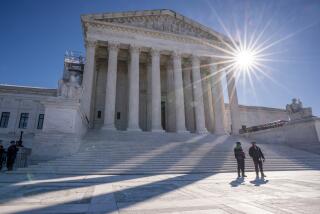Judges Rule
When a judge tosses out a popular legislative act because it conflicts with the Constitution, or if she abandons an earlier misinterpretation of the document, she is simply doing her job — complying with the highest expression of democratic will, the Constitution. When a judge reads a statute broadly because it is written broadly, or seeks to make sense of a provision that is vaguely or poorly drafted, he is simply trying to execute a legislature’s intent. Unfortunately, if Chief Justice William Rehnquist resigns after the Supreme Court’s current term expires, the battle over his replacement will probably ignore the reality that good judging involves exercising power and doing potentially unpopular things. More likely, the debate will descend into hyperbole over “judicial activism.”
Sometimes judicial activism is used to describe the willingness of judges to invalidate the work of elected or appointed officials. Activist judges of this stripe don’t defer to legislators, presidents or governors when determining the boundaries of legislative or executive power. Instead, they believe they should independently provide the final word about what is constitutionally permissible.
Many critics of the Rehnquist court, for example, call it activist in this sense because it regularly steps in and sets aside the decisions of Congress, state legislatures and executive-branch officers. Between 1995 and 2000, the court struck down at least 24 congressional statutes, not to mention many state laws and executive actions. By contrast, the Supreme Court in the nation’s first 75 years struck down only a couple of acts of Congress.
Nor has the Rehnquist court shied away from controversy, including cases dealing with flag burning, the death penalty for juveniles, the contested 2000 presidential election and the war on terrorism.
In refuting this activist label, defenders of the current court invoke a second definition of activism. Judges aren’t activist merely because they are energetic and regularly weigh in on hot legal issues. Instead, truly activist judges “legislate from the bench.” They are said to make up the meaning of the Constitution or of a statute to realize their policy preferences. These judges supplant the will of the people with their own predilections.
And they are particularly dangerous if the Constitution is their canvas. Lawmakers can reenact a statute misread by a judge for policy reasons. But when a judge willfully distorts a constitutional provision to block a statute he doesn’t like for personal reasons, there are only two ways, both difficult, to correct him: a constitutional amendment or filling court openings with judges who express a willingness to overrule precedent (a predisposition, ironically, that some would call a third definition of activism).
The most celebrated reputed example of the second kind of judicial activism is Roe vs. Wade because the “right of privacy” it protects and the idea it relies on — that the 14th Amendment’s due process clause protects substantive rights — are not easily found in the text, structure or history of the Constitution. But here too, the Rehnquist court of the last two decades is vulnerable to a similar charge. The court has not only preserved the anti-textual “substantive due process” doctrine, it has also extended the concept in both progressive and conservative directions. The right to same-sex sexual activity recognized in Lawrence vs. Texas and the right to be free from excessive punitive damage awards both rely on extensions of this creative judicial doctrine.
To the extent that they invalidate legislative acts on state constitutional grounds and/or produce creative readings of statutes and constitutional provisions, state high courts are not immune to charges of judicial activism. But there’s an important difference between state and federal systems. In many states, judges directly go before voters for approval or removal. This electoral accountability may make controversial decisions more easily defensible. Also, overly creative state judicial interpretations can be more easily corrected. California’s initiative process, and the national response to state court rulings on gay marriage, illustrate this.
Under the second definition of activism, everything turns on how creatively and broadly a good judge is supposed to interpret a legal document. Most everyone agrees that the text should be a starting point, but mainstream legal thinkers take different positions on how the words should be construed — as understood by their drafters? Their ratifiers? Later generations of Americans?
There is similar disagreement among thinkers on the degree of generality at which to consider the historical circumstances surrounding the text: Should a judge try to glean overarching values and themes from the document and apply them to circumstances the text doesn’t explicitly cover? And there is no consensus over how useful non-American texts and precedents are when interpreting domestic laws.
These are the kinds of questions that lie behind misleadingly simplistic phrases labels like “judicial activism.” And they are precisely the questions that should be explored — using specific examples to nail them down — in any judicial nomination/confirmation process. The answers provided by the president and his supporters are not always the most sensible and certainly not the only ones imaginable. The Senate, and the American people, must also pierce the activism label and decide what kind of judges they want.
More to Read
Sign up for Essential California
The most important California stories and recommendations in your inbox every morning.
You may occasionally receive promotional content from the Los Angeles Times.










